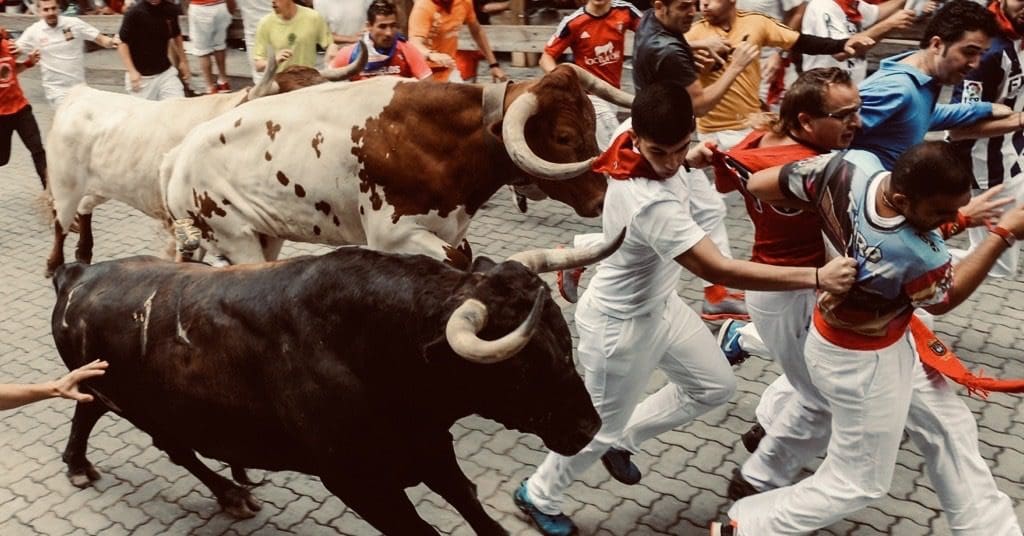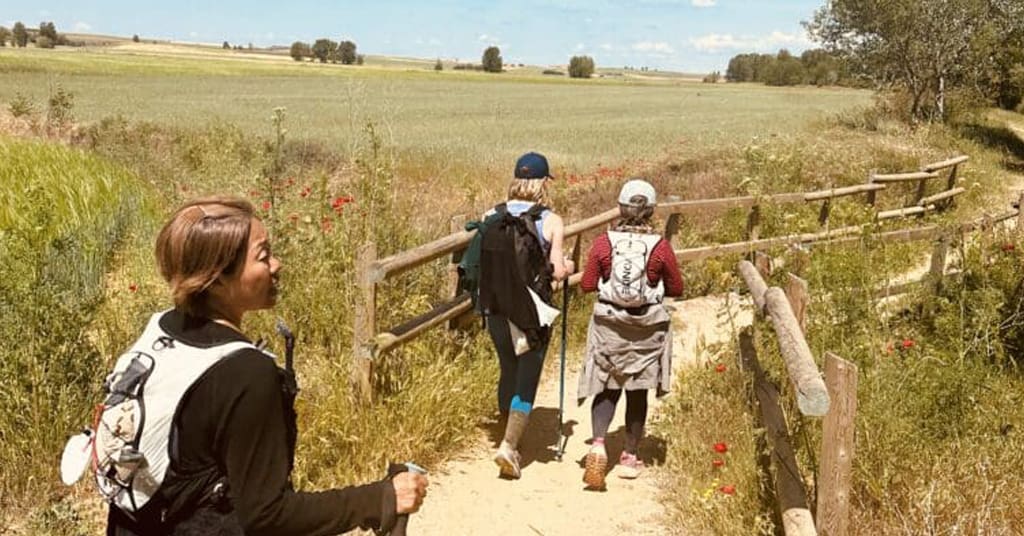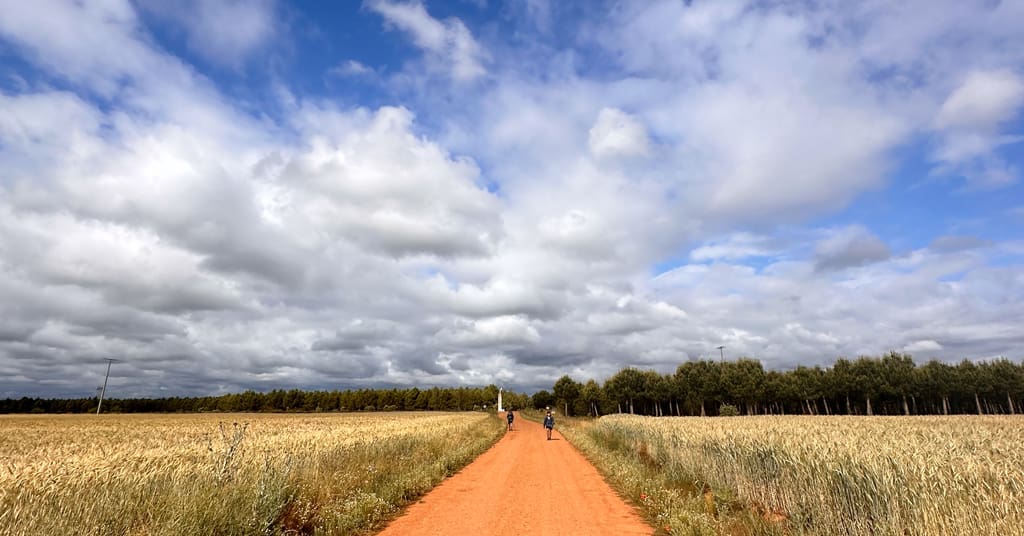Section 2
Roncesvalles to Pamplona
After the strenuous climb over the Pyrenees to Roncesvalles, the Camino levels out and descends into Navarre, through the Basque Country. The stretch from Roncesvalles to Pamplona is about 50 km and takes most pilgrims two days. It’s mostly downhill or flat, with lovely walking through forests, riverside paths, and quiet little villages, following the Arga River.

Roncesvalles
743 KM to Santiago
Don’t count on sleeping in if you stay at the monastery albergue. The volunteers come through the dorms singing, waking everyone up at 6 am sharp. You don’t really have a choice. Time to get moving. There’s no breakfast served at the albergue, but there are a few vending machines downstairs if you want a quick coffee in a plastic cup before you head out.
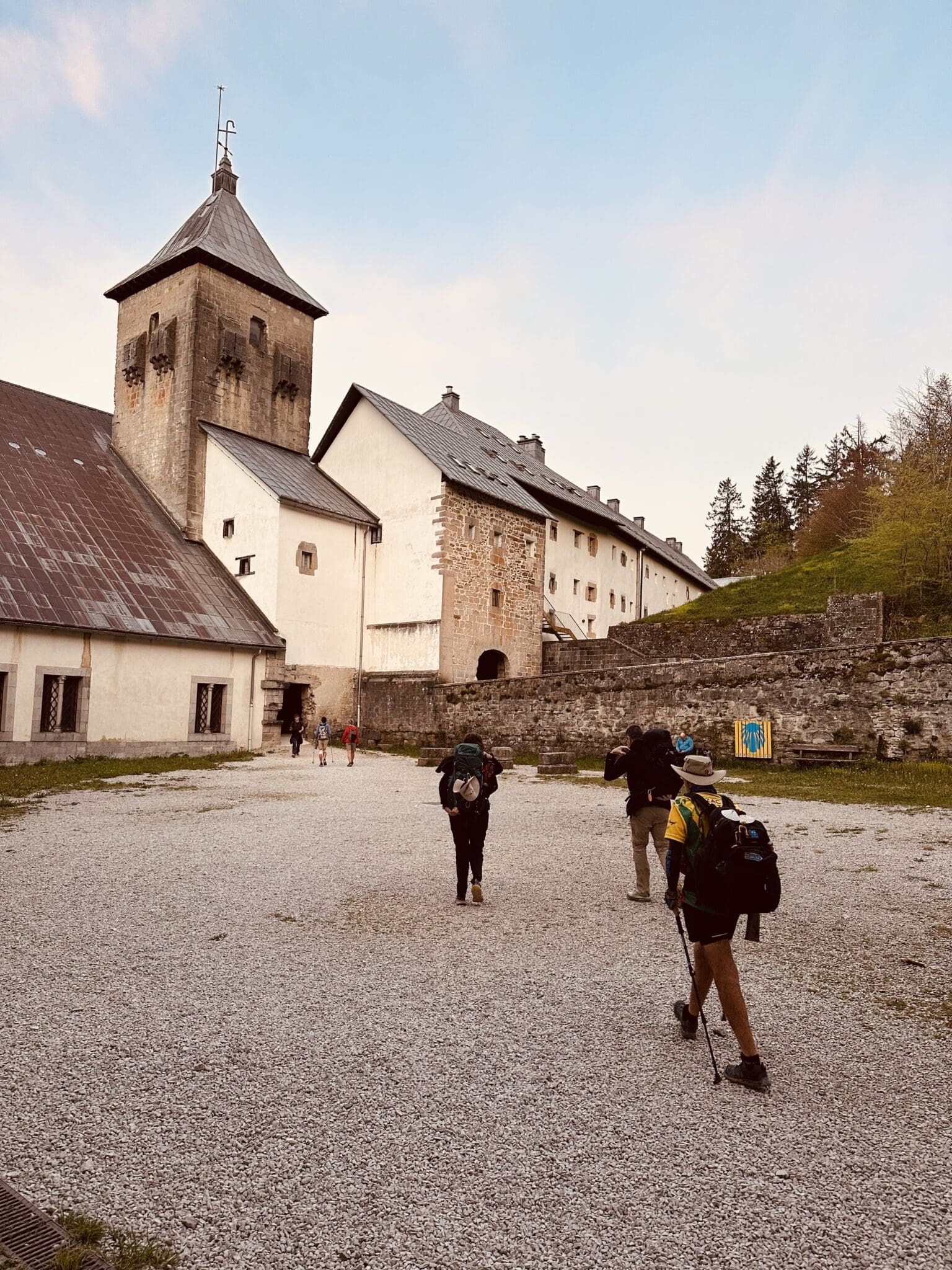

Roncesvalles is one of the most popular starting points on the Camino, so there’s usually a big crowd heading out at the same time in the morning. If you’re not in a rush, it’s worth hanging back and letting the pack go ahead—it makes for a much quieter, more peaceful walk. Café Sabina opens around 8 a.m., so grab a croissant and a proper coffee there. By the time you hit the trail, things will have thinned out and you’ll be able to hear the birds again.
Leaving Roncesvalles couldn’t be easier, just look for the road sign that says “Santiago de Compostela 790km” and grab the obligatory selfie in front of it! The Camino path is just to the right of the sign. And if you’re wondering why it says 790km when your guidebook insists it’s 747, that’s because the road takes a more winding route, while the Camino goes more or less as the crow flies.
The path to Burguete takes you through peaceful beech and oak forests, gently downhill. Along the way, you’ll pass La Cruz Blanca (the White Cross), also known as Roland’s Cross. It was placed there in the 1600s to “purify” the forest of witches; apparently, there were a few hanging around back then.
Burgete
740 KM to Santiago
The first village you will meet is Burgete. If you didn’t get breakfast in Roncesvalles, don’t worry, there’s a café right as you enter.
Burguete is best known as the fishing retreat for Jake Barnes, the protagonist in Hemingway’s The Sun Also Rises. When he wasn’t caught up in the frenzy of Pamplona’s bullfights, he came here for the tranquillity and the trout fishing. Hemingway himself stayed at Hotel Burguete, and the place is still in business.
As you walk through the village, keep an eye out for a sharp right turn back onto a path into open country. Interestingly, until now, you have been walking mostly south, and now, for the first time, you are turning decisively west in the direction of Santiago.


Espinal
736.5 KM to Santiago
The walk from Burguete to Espinal is gentle and relatively flat, winding through peaceful forests. As you approach Espinal, the trees begin to thin, and the village appears tucked into the rolling hills of Navarre. It’s a quiet place with a few bars, perfect for a coffee stop.
Biskarreta
730 KM to Santiago
Continue your walk to the village of Biskarreta, a quiet little place tucked into the hills. As you enter, you’ll spot a quirky café on the left with a giant old-fashioned weighing scale out front. It might be fun to weigh yourself here, and then again at the end of the Camino. To see what the road has taken or given. The café itself is a lovely stop for a cold drink or a quick snack, with a few shaded tables outside.

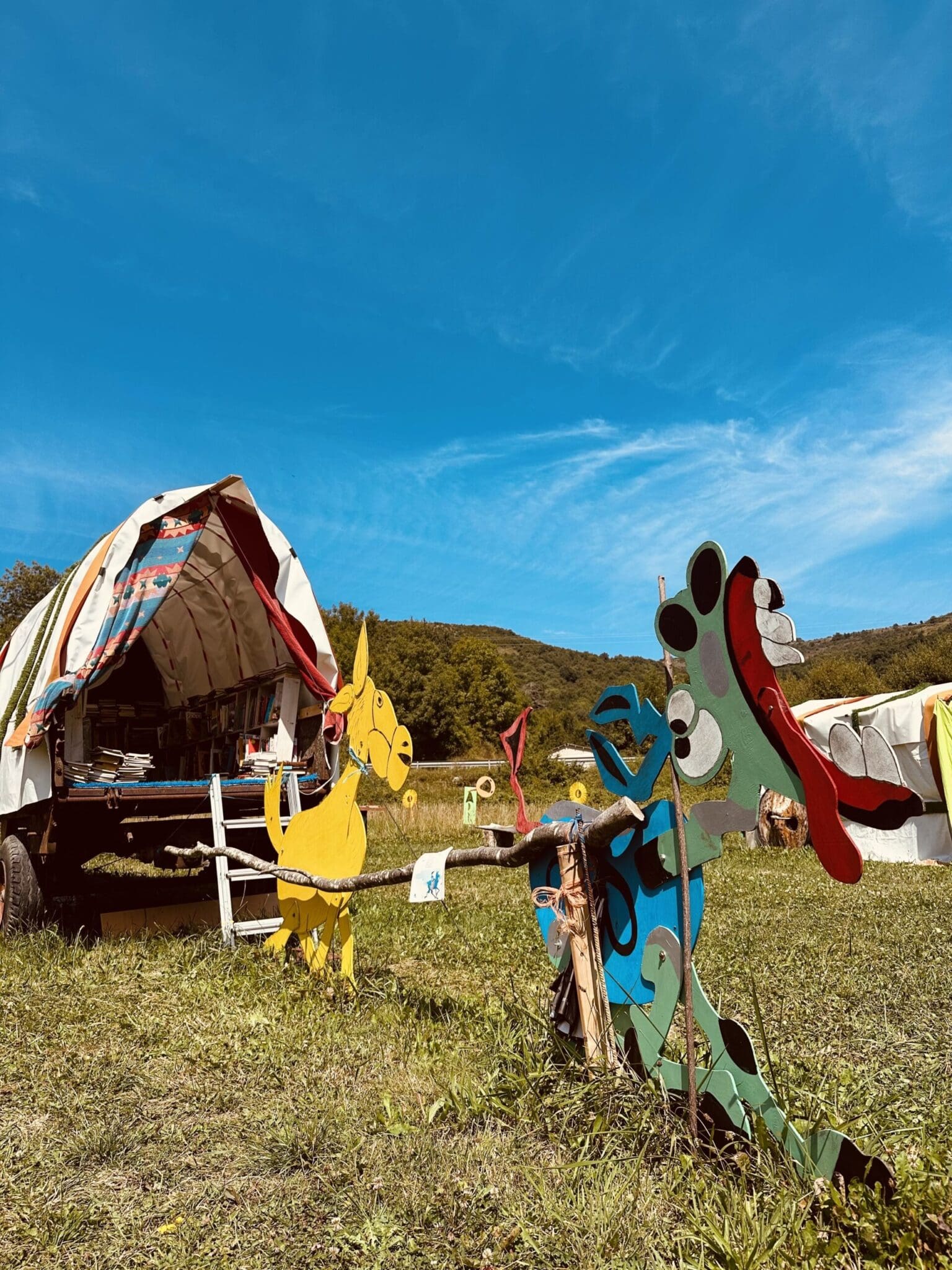
As you leave Bizkarreta, just off the road and stretching into the field, you’ll find a strange and cheerful little place. It’s part art project, part local effort, rough around the edges but full of heart. The kind of place where someone cared enough to make something out of nothing. There are shelves of old books you can take or swap, and bits of artwork scattered around like someone just left them there for you to find. It’s not polished, but it doesn’t need to be.
Zuibiri
721 KM to Santiago
The stretch toward Zubiri gets steeper and rockier. It’s tough on the knees, so take it slow. When you reach the village, you’ll cross the River Arga over an old stone bridge called Puente de la Rabia (The Rabies Bridge). Local tradition says if you walk your animals across it three times, it’ll cure them of rabies. No idea if it works, not sure if I will ever get a chance to test the theory.
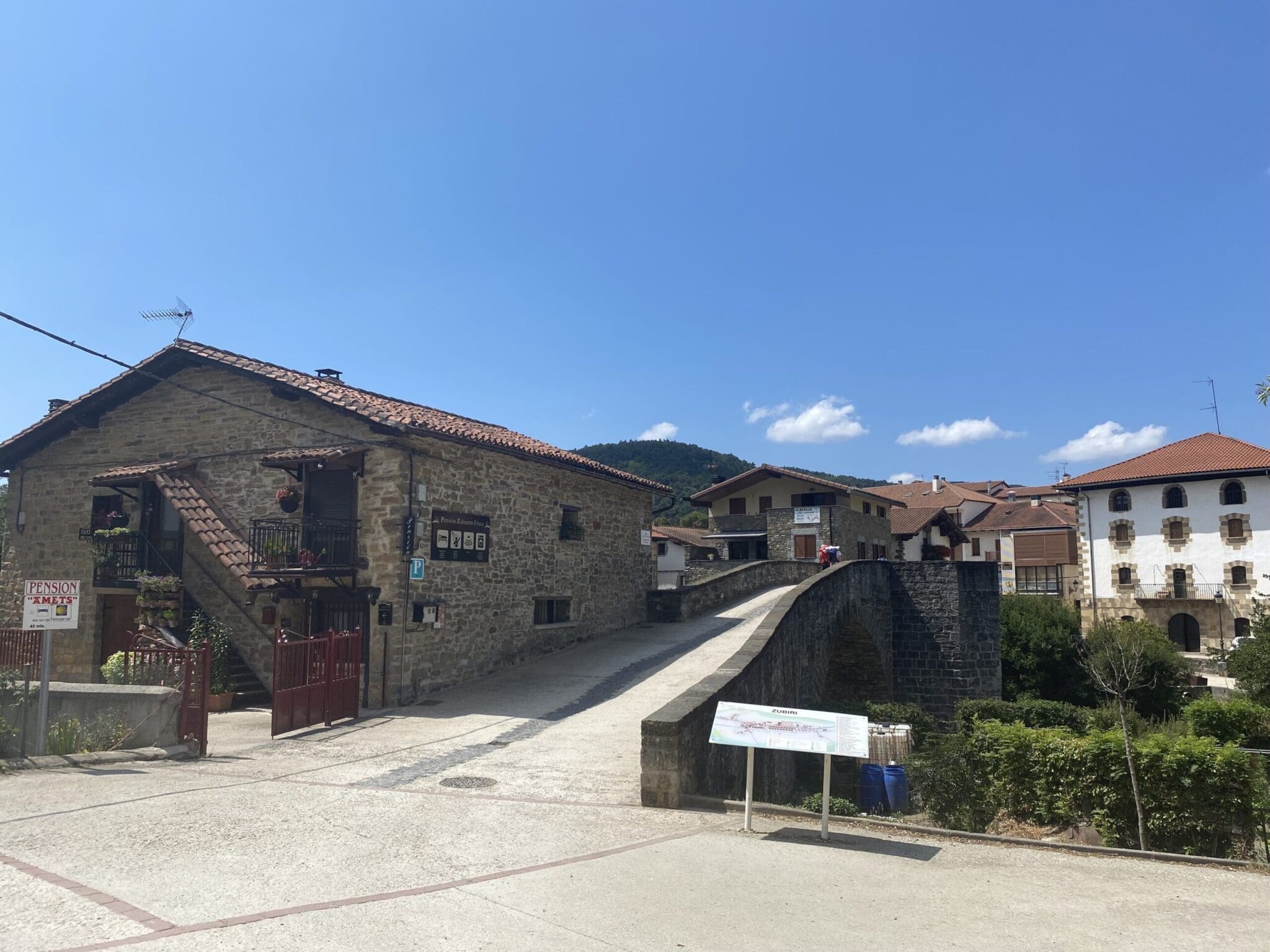

The river here is perfect for soaking tired feet—even if you’re not planning to stop in Zubiri, it’s a great spot to chill for a while and take a break.

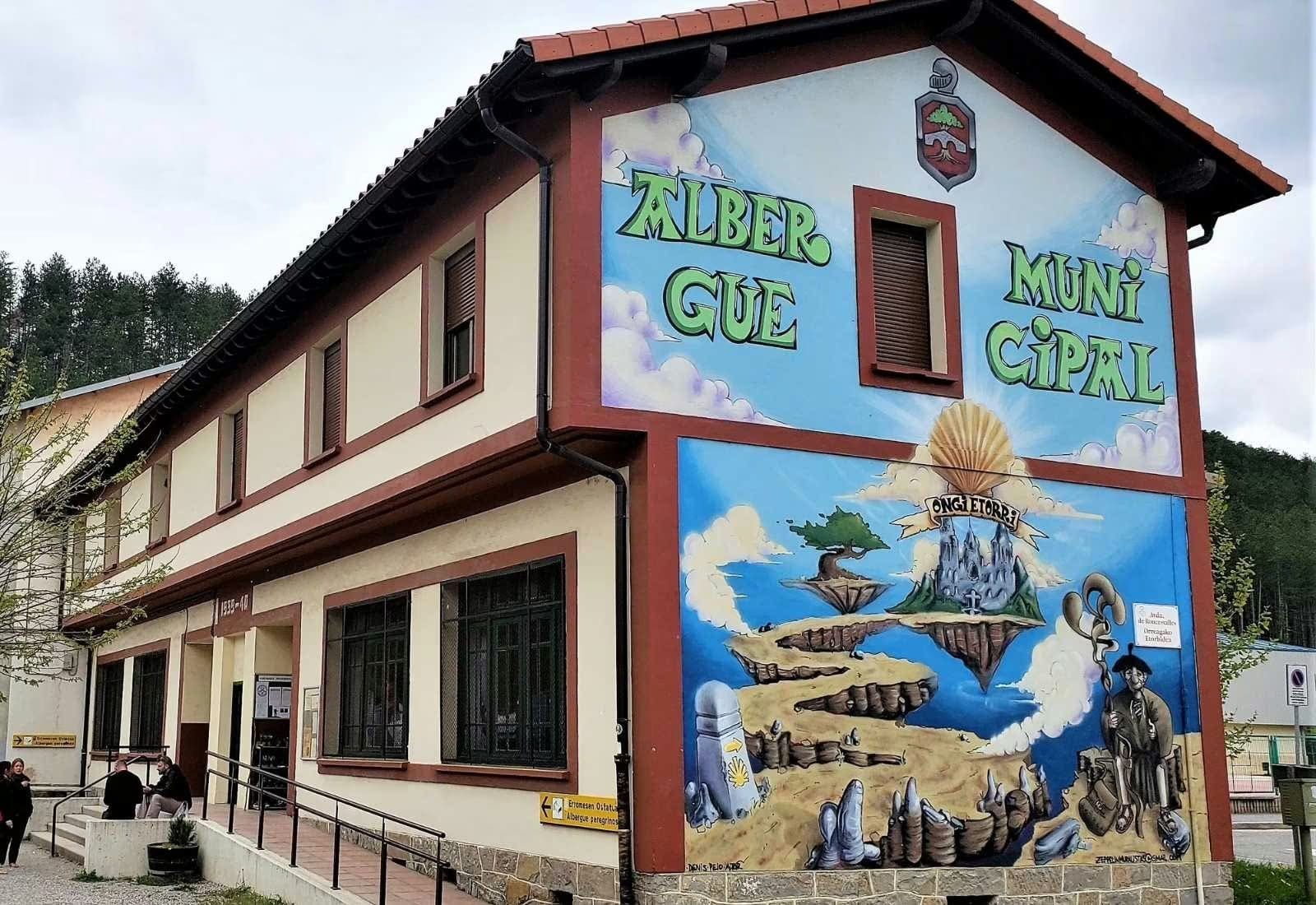
There are a bunch of good spots to eat and sleep in Zubiri. The municipal albergue is decent, but my favourite is Albergue Suseia, with really friendly vibes, comfy bunks, and a cracking communal dinner. You’ve probably noticed by now that I’m a big fan of places that do a shared meal. It’s one of the best parts of the Camino, sitting down at a long table, meeting people from around the world, and swapping stories.
Larrasoaña
715.5 KM to Santiago
Leave Zubiri by crossing back over the bridge to rejoin the Camino. From here, the path continues to follow the river, crossing it several times. After about 5 km, you’ll reach Larrasoaña, a smaller village than Zubiri but another good place to overnight. At the back of the village is Albergue Nicolás. It’s a nice, quiet place to stay, with a small general store across the road. The albergue has a lovely terrace where you can sit and relax, and it’s a great place to meet fellow pilgrims, as most people tend to gather there, since there is not much else to do in the village.

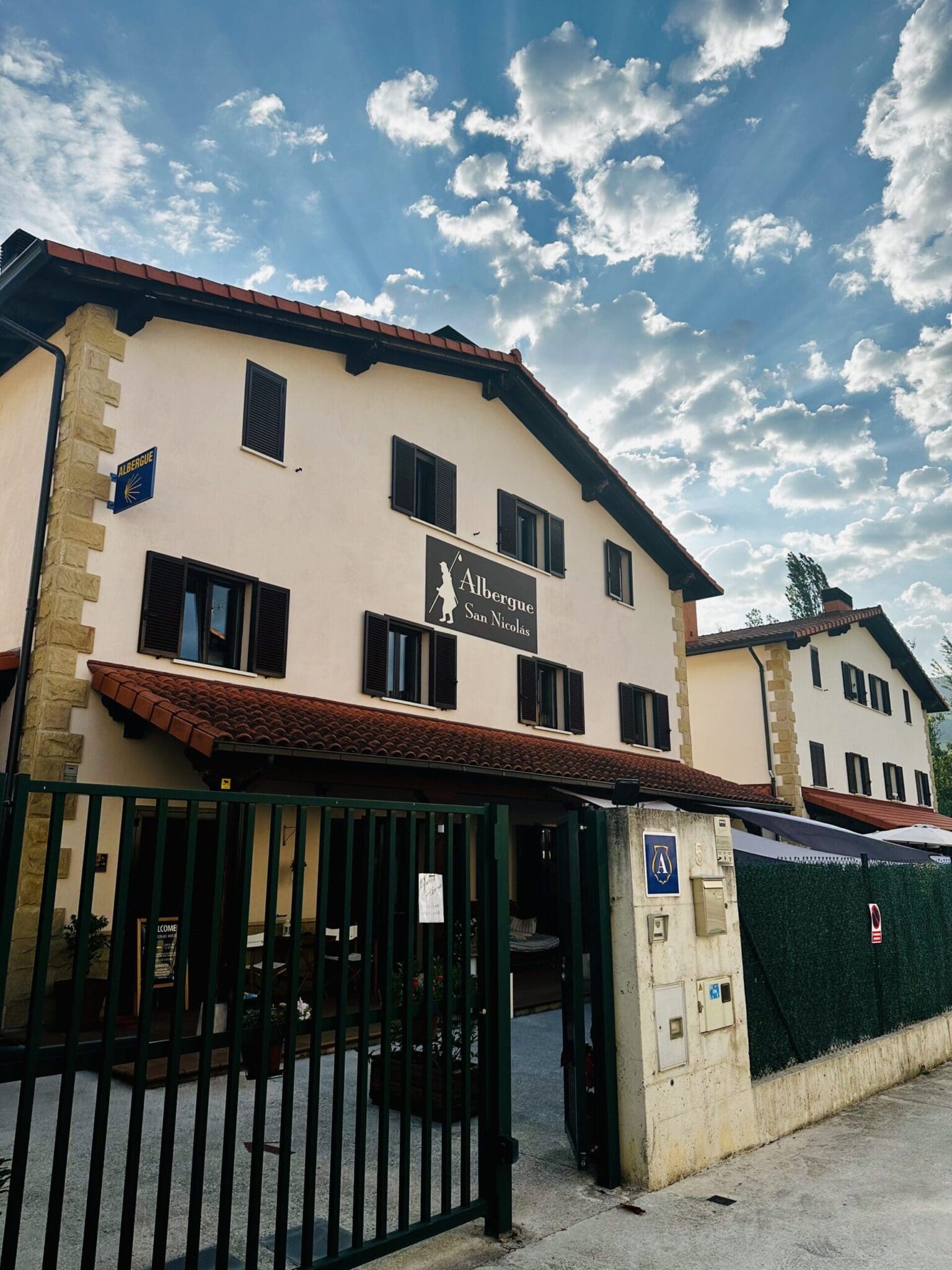
If you’re a fan of The Way, it’s worth knowing that just past Larrasoaña is the village of Akerreta. The cast and crew stayed at Hotel Akerreta during filming, which is the albergue where Martin Sheen’s character first meets the chain-smoking Canadian Sarah. In real life, it’s a beautifully restored 18th-century Basque farmhouse, full of charm and history.
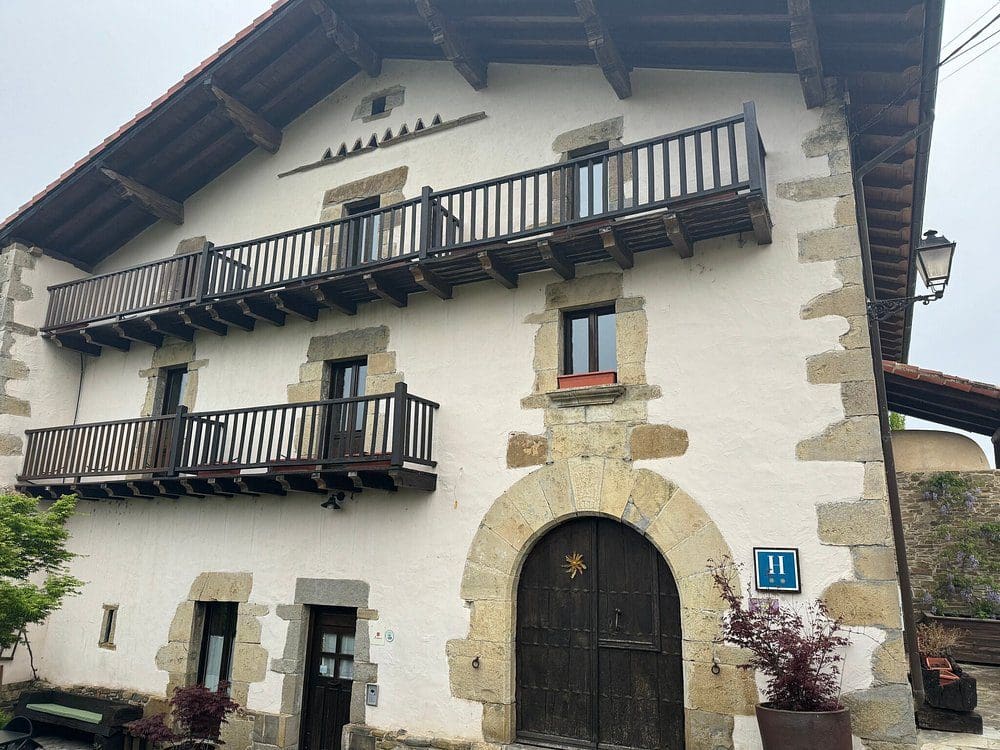

Zabaldika
708.5 KM to Santiago
Continue on to Zabaldika. As you come into the tiny village, the path splits. The main trail veers left, and most pilgrims follow that route, never realising what they’ve missed. But if you take the small right-hand path, the one that climbs a bit uphill, you’ll find a hidden gem, the Iglesia de San Esteban, the Church of Saint Stephen. Inside the old bell tower are two ancient bells, and pilgrims are welcome to climb up and ring them.
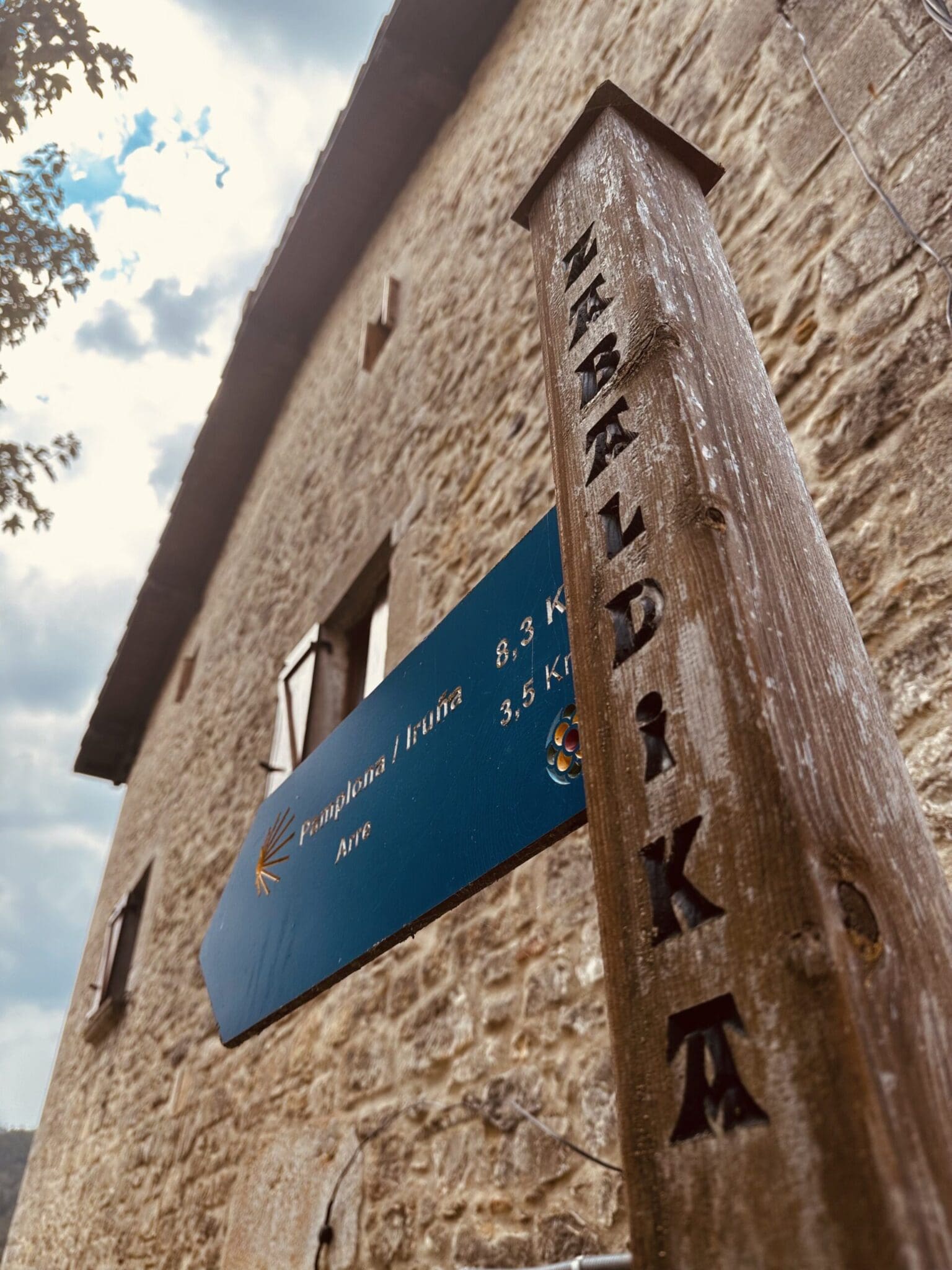

Right next to the church is the Albergue Parroquial de Zabaldika, run by the Sisters of the Sacred Heart. It’s a donativo albergue with simple beds and a shared meal. Quiet, welcoming, and full of heart, it’s the kind of place that sticks with you. There’s just something really special about it.
Pamplona
700 KM to Santiago
The walk into Pamplona is one of the best city approaches of the Camino. Later on, during your Camino, you’ll learn that walking into big cities usually means slogging through industrial estates and suburbs for hours. Not here. The approach to Pamplona feels like you’re still in the woods, green, quiet, rural, until suddenly you pop out at a Romanesque bridge. Cross it, and just like that, you’re in the city.
Right after the bridge, there’s a medieval monastery, Albergue de la Trinidad de Arre. I’ve never stayed there, but it looks peaceful, a good option if you want to skip the noise and bustle of central Pamplona.
From there, it’s about another 4 km walk through the suburbs to the cathedral. Cross the Magdalena Bridge and then it’s a short climb up a ramp along the old city walls, entering the historic centre through the Portal de Francia, a big stone gate that once kept armies out and now welcomes pilgrims.

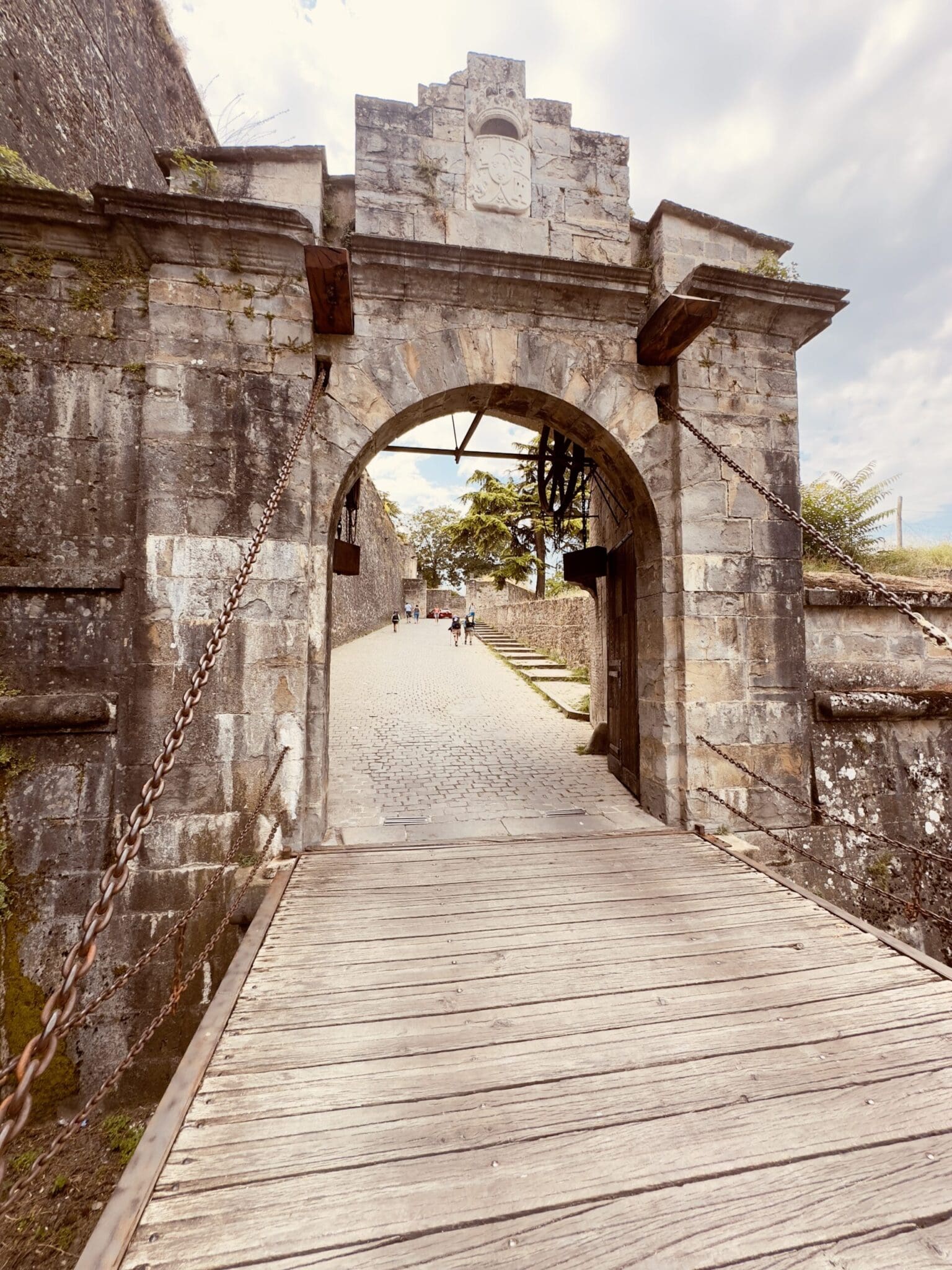
When you get inside, pause on the ramparts and look back over the green valleys you’ve walked through. Then turn around and dive into the old town. Pamplona is a fantastic Basque city, with narrow streets, old stone buildings, balconies full of flowers, and loads of atmosphere.


The city was founded in 74 BC by the Roman general Pompey, who named it after himself. It was once split into three rival towns, later unified by a Navarrese king. Pilgrims have passed through for over 1,000 years.
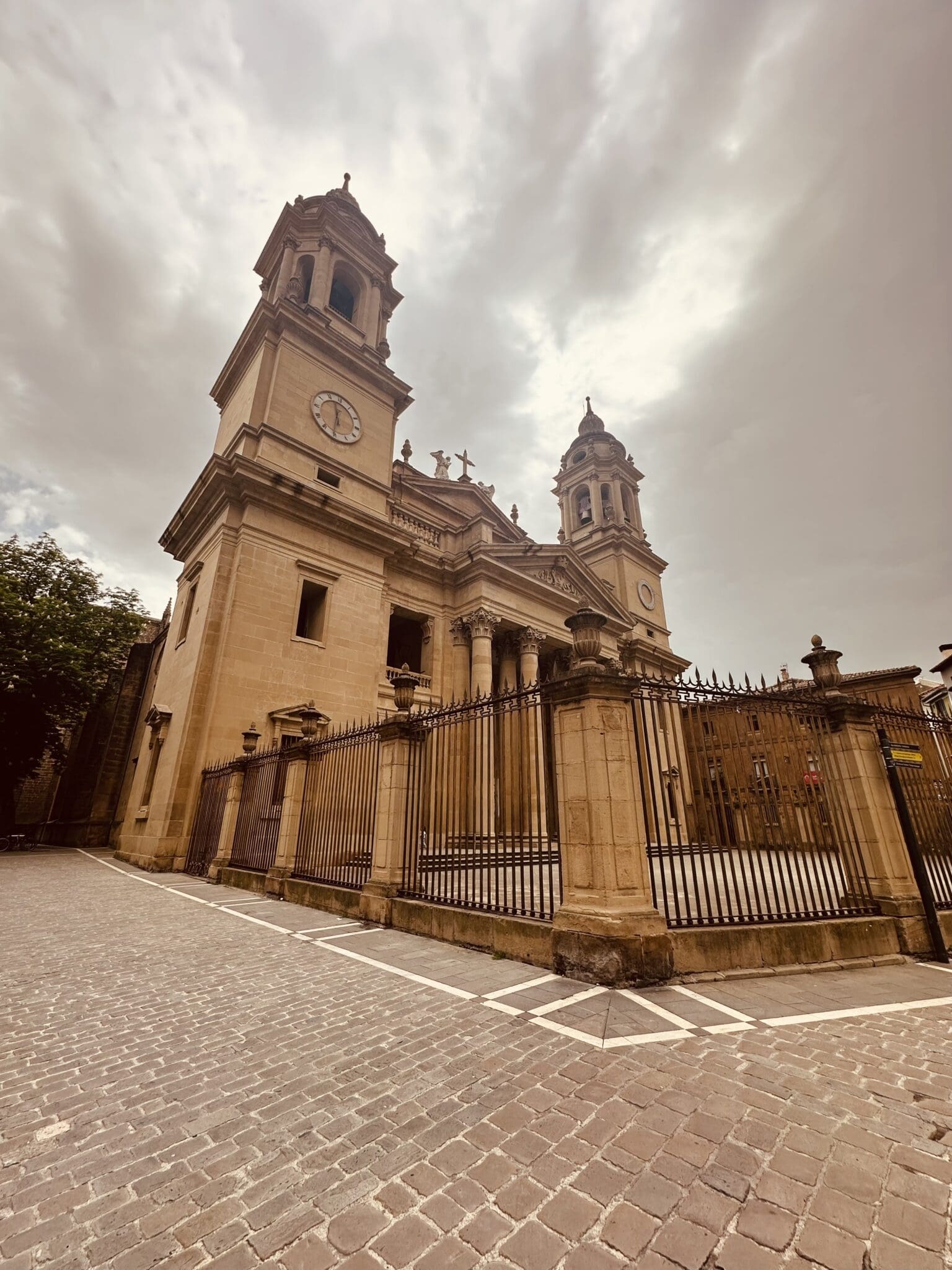
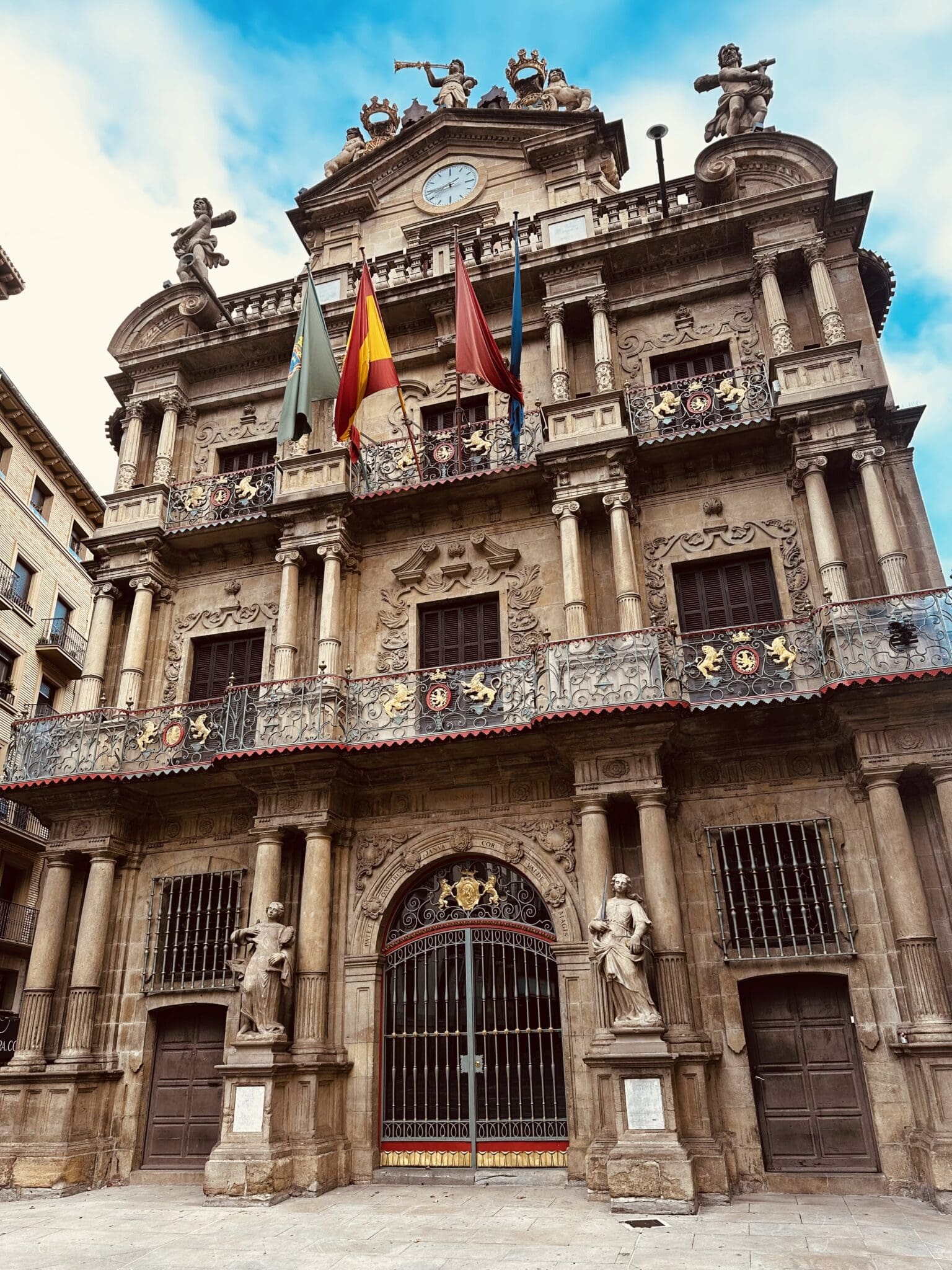
Most people save their rest days for later on the Camino for places like León or Burgos. Pamplona comes early, so taking a break here can feel like a luxury. If you can, though, take the day off; if not, get there early and make the most of it. If it were me, I’d check out the cathedral, grab some pinchos at a good bar, and do a little Hemingway-style bar crawl. Visit the bullring (Plaza de Toros) and Hotel La Perla, where he used to stay. Then finish up at Café Iruña on Plaza del Castillo, don’t forget a selfie with his statue. Make time for the Camino museum too. The Pilgrim Welcome and Interpretation Centre is a great spot to dive into the history of the route.


San Fermín, the famous running of the bulls, happens every year from July 6th to 14th. It’s more than wild. The whole city goes wild, everyone dressed in white, wearing red scarves, soaked in wine, with music everywhere, as kids, grannies, and tourists party all night long. It’s chaos. I’ve never been shy of a party, but I went once, years ago, and it scared me off for good. Unless you’re really up for it, my advice would be to avoid Pamplona during San Fermín. If you’re hoping to catch a bull run, you might come across one later on in one of the smaller towns, maybe in Puente la Reina or Los Arcos.
There are loads of places to stay in Pamplona. I usually go for a hotel, which means I don’t have to be in bed by the 10 pm curfew. If you’re after an albergue, Jesús y María is a popular one, right across from the cathedral. It can fill up during peak season, and if you arrive late, you might miss out on a bed. Still, they’ll often find you a spot on the floor of a local school gym. A bit of extra hardship makes you feel like a real pilgrim.
Pamplona is a fine city. It has energy, history, food, and spirit. Don’t overthink it. Keep it simple. Let it all unfold.


